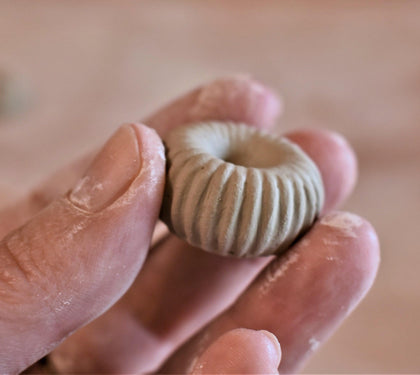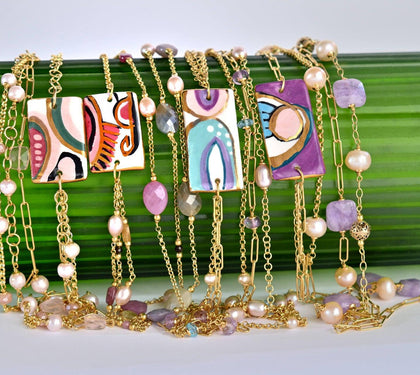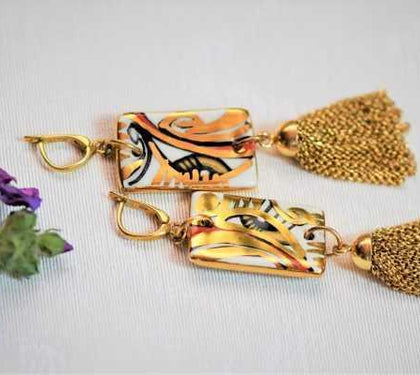The term third-fire gold , in the ceramic field, refers to the third firing which is applied to an object which has already undergone a first firing of the support, or biscuit firing, and a second firing of the enamel or glazing, to subsequently add the decorations in multiple techniques.
A particular category of third firing "colours" are all lusters (colours with a metallic effect) and metals (gold, silver, etc.) to which the third firing at a specific temperature is dedicated.
The luster technique first appeared in Abbasid Iraq. Subsequently, it was developed by the Fatimids in Egypt and then successfully used by the Iranian Seljuks.
In the history of ceramics and among all ceramic decoration styles, gold glaze has always fascinated people with its glow and reflection. Golden tiles began to be used to decorate mihrābs in the early 7th century. These remaining masterpieces from the Khārazmshāhi, Mongol, Ilkhanate and even Timurid periods represent the synthesis of the decorative techniques used for the construction of mihrābs.
The ceramic techniques were transmitted to Spain, where the kingdom of the Moors remained until the late 15th century, and from here, through Mallorca (the generally accepted etymology is therefore Mallorca, or in its ancient form Majorica or Maiolica, a more logical etymology than the one taken from Malaga proposed by Glück in Der Kunst des Islam ), arrived in Florence, Deruta, Faenza and Pesaro.
The pinnacle of the ceramic ars it was reached in Italy by the sixteenth-century production.
The Byzantine Style, inspired by the mosaics of the Byzantine era, bring light and richness to the work; examples of this beauty are the mosaics of the churches of Ravenna, Constantinople, Thessaloniki, Chios, Venice, Palermo, Cefalù, whose particular characteristic is the background, usually in gold.
In the field of majolica decorated with the color gold we remember Antonio and Lorenzo Pignani who obtained the title of patent in 1673.
Gold which in classical, early Christian, medieval and Renaissance antiquity was the synthesis of light and space, in the Baroque era gold was the maximum exaltation of ornament.
In the 18th century, gilding was the final phase in the decoration of Vincennes and Sèvres porcelain. Gilding was extremely expensive but also important in the era of candlelight, as it reflected additional light onto the tea or dining table.
The Vincennes factory began decorating with fired gold in 1748, after purchasing a recipe from a Benedictine monk. The most basic decoration copied the simple fillets or bands used in Meissen manufacturing.
Rich gold decoration in the neoclassical style was characteristic of Sèvres table services made for Catherine the Great of Russia in 1778-9 and Louis XVI in 1783-92. Some pieces received up to three layers of gold, resembling bas-relief sculptures when finished. The Empire style replaces neoclassicism: the decorations acquire solid color backgrounds, including gold ones.
With the beginning of the twentieth century, the Art Nouveau season began in Italy, thanks also to the slightly earlier spread of neo-sixteenth-century fashion throughout the peninsula. The beginning of the century saw, in fact, the spread of a strong feeling of revival, which led to the creation of many works inspired by Byzantine, medieval or Renaissance art where gold could not be missing.
The third-fire application of gold in ceramic represents a sophisticated expressive technique that gives great brightness and material value to the work.




